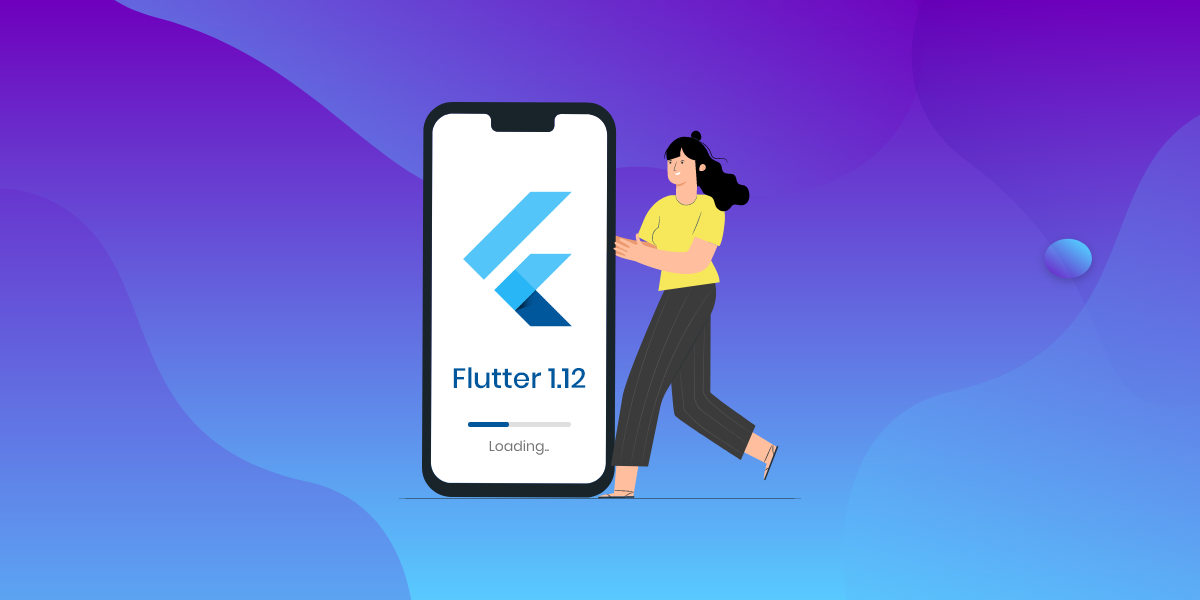TECH
How Flutter 1.12 Version Took Developers by Surprise?


If we talk about Flutter, we see how it has gained traction and emerged to be a favorite SDK of developers over the years. Created by Google, there are various perks that speak for Flutter such as – it is an open-source cross-platform toolkit, allows developers to write in a dart programming language, has its own graphic engine, Skia, etc. Since there are tons of open-source frameworks available that have made an inroad for developers and acclaimed mobile app development company to use it the way they want it and give their app a whole different look, Flutter, on the other hand, maintains the nativeness of the app which is liked the most by the product owner as well as developers. The most interesting thing about Flutter is it combines the quality of native apps with the flexibility of cross-platform development.
This means, if you write a code for one platform, you can use it for both iOS and Android without exerting oneself to rewrite the code. While mobile app developers were still getting acquainted with the earlier version of the SDK, Google, the development team of Flutter came up with another version i.e. Flutter 1.12 released in the year 2019. It is speculated that Flutter 1.12 version has addressed over 1900 pull requests sent by 188 contributors. This new Flutter version is based upon the concept of Ambient Computing which we would be discussing in detail in the next section of the article.
What Is Ambient Computing?
Ambient Computing is the latest buzzword among developers that has picked up steam speedily after the launch of Flutter 1.12. Let’s first try to understand ambient computing as a whole and then headfirst to the concept of ambient computing in Flutter. Ambient computing in general refers to integrating computers or machines into an environment that can create a seamless experience for users. In simple terms, Ambient Computing is using technology more interactively.
In Flutter, Ambient Computing can be termed as using various technological and IoT components such as software, hardware, machine learning, etc. in sync so that it can help developers create reusable code. In one word, Google’s ambient computing vision for Flutter’s new version is to let developers build mobile and web apps from the same codebase. Ambient computing provides an inter-connected environment to the programmers who can go with code development without a hustle.
Added Features in Flutter 1.12 Release That Garnered Attention
Developers prefer Flutter for its smart and exclusive features and the new version seems to be rich in proficient peculiarities. Besides having an improvised codebase and fixing bugs of the earlier version, Flutter 1.12 has some highlighted functionalities. So let’s see what the latest version of Flutter has to contribute to developers.
Upgraded to Dart 2.7
As the Flutter advanced to version 1.12, the dart programming language expands from 2.5 to 2.7. The new extended programming language is a more expressive form of the dart and supports safer handling strings with special characters. Its extension methods are resolved and dispatched statically which makes it convenient for programmers to sustain their coding. With this new version, the chances of fronting errors due to the null value will be reduced.
macOS Desktop Support
Another breaking with the past change that developers got to see in the Flutter 1.12 version is the macOS desktop support which is somehow revolutionary in its own way. Now the developers can spend their time in the Flutter app development project that runs on macOS. Moreover, apart from developing a fully-optimized macOS application with Flutter, the programmers can experiment with the material design, keyboard navigation, visual density assistance, etc.
Android Enhancements
Another update in Flutter 1.12 is designed for android enrichments. The earlier Flutter version had some issues that more often used to come up as a roadblock in android app development. Flutter version 1.12 utilizes AndroidX-based support libraries in which the alternative code path makes the correct use of archive files that is ultimately used by developers. Cut to the short, Flutter’s new version makes the android app development process more advanced and quick.
Multi-Device Debugging
Creating a cross-platform app comes as the biggest challenge for developers as they have to manage the codebase in a way that could be used for separate development and thus require additional time for each platform. And more than that, testing the app on two different devices was so time-consuming. With the help of a multi-device debugging upgrade in Flutter 1.12, developers can test the performance of the app and identify any issues in real-time altogether for both platforms.
Improved Web Support
Instead of just extending and upgrading its power to existing functionalities, the Flutter version 1.12 has enriched the web-development that includes beta web support. Many developers who have just started with the developing career often mistake Flutter being the mobile development SDK. It was true to some extent until this new version came into view. Applying a dart compiler has become convenient for developers that further enhances web assistance.
Conclusion
Many developers who claimed that Flutter 1.12 is the best Google version to date, I, without a doubt, second them. Flutter has come up as a true game-changer in the cross-platform SDKs. It has apparently gained popularity over React Native, however, it still cannot be termed as a revolutionary upgrade for gaming companies who had so many expectations from Flutter 1.12. Nonetheless, there is a possibility that this would be looked at attentively by the Google team, and the newer version, probably be Flutter 1.13, will have more enhanced functionalities.
If you are currently in search of experienced mobile developers who can enrich your app idea, share your requirements with us and we will be happy to discuss it further.


